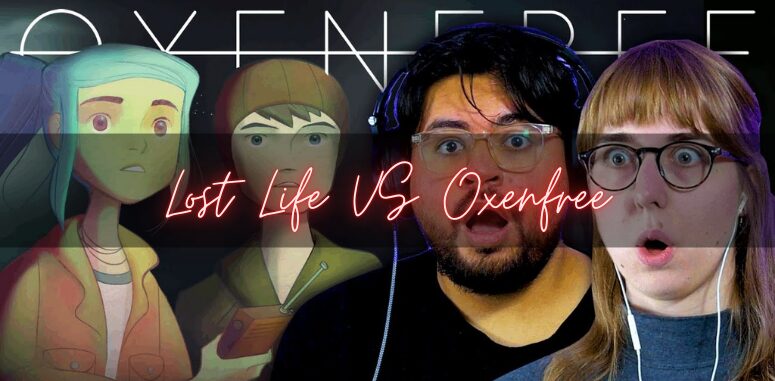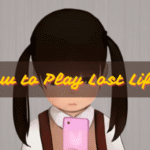If you’re a fan of narrative-driven games, you’ve likely heard of Lost Life and Oxenfree. These two games have captured the attention of players with their unique storytelling, atmospheric visuals, and immersive gameplay. But which one should you play? In this article, we’ll dive deep into the Lost Life vs Oxenfree debate, exploring their strengths, differences, and why each might be the perfect choice for your next gaming session. By the end of this comparison, you’ll have a clear understanding of what each game offers and which one aligns better with your gaming preferences.
Storyline & Narrative Depth: Lost Life vs Oxenfree
In Lost Life, you’re thrown into a world filled with mystery and psychological tension. The game doesn’t just tell a story—it makes you live it. From the moment you start, you’re pulled into an unsettling atmosphere, where every choice feels weighty and consequential. The plot unfolds gradually, revealing dark secrets and twists that keep you on the edge of your seat. You’re not just a player; you’re an active participant in a disturbing tale that challenges your morality and decisions.
Gameplay Mechanics: Lost Life vs Oxenfree
In Lost Life, the gameplay is a blend of exploration, puzzle-solving, and decision-making. You’ll often find yourself navigating through eerie environments, searching for clues, and making choices that impact the story’s direction. The puzzles are challenging but rewarding, and they add to the sense of dread and tension that permeates the game. Every decision you make feels like it has weight, pushing you further into the game’s dark narrative. The game’s mechanics are designed to keep you engaged and on your toes, never letting you forget the gravity of the situation your character is in.
Oxenfree takes a more relaxed approach to gameplay, focusing heavily on exploration and dialogue. The core mechanic of the game is its real-time conversation system, where you choose dialogue options that affect how the story unfolds. Walking through the island, you interact with various objects and characters, uncovering the secrets of the place and the story behind the ghostly events. The game also incorporates a radio mechanic, where tuning into different frequencies reveals hidden messages and adds layers to the story. While Oxenfree doesn’t have the intense puzzles of Lost Life, its gameplay is immersive in its own right. The seamless integration of dialogue and exploration creates a natural flow, allowing you to lose yourself in the world and the story without the distraction of complex mechanics.
Visuals and Art Style: Lost Life vs Oxenfree
Lost Life employs a dark, gritty art style that complements its disturbing narrative. The environments are detailed, often claustrophobic, and filled with shadows that hide unknown horrors. The character designs are realistic, adding to the game’s unsettling vibe. The color palette is muted, with a focus on darker tones that enhance the feeling of dread and unease. This visual approach makes the game’s world feel oppressive, pulling you deeper into its psychological horror.
In contrast, Oxenfree features a more stylized, almost cartoonish art style that belies the seriousness of its story. The game uses a vibrant color palette, with blues, greens, and purples dominating the scenery. The island’s environments are beautifully crafted, with a minimalist aesthetic that leaves much to the imagination. The character designs are simple but expressive, allowing the focus to remain on their interactions and the story. The use of lighting and visual effects in Oxenfree is particularly noteworthy, creating a hauntingly beautiful atmosphere that lingers long after you’ve put down the controller.
Audio & Sound Design: Lost Life vs Oxenfree
In Lost Life, the audio is designed to keep you constantly on edge. The game uses a combination of ambient sounds, eerie music, and sudden, jarring noises to create a tense atmosphere. Every creak of a floorboard, every whisper in the dark, adds to the sense of impending doom. The soundtrack is sparse but effective, using minimalist compositions to heighten the sense of isolation and fear. Sound cues are often tied to key moments in the game, making the audio an integral part of the gameplay experience.
Oxenfree, on the other hand, uses sound design to immerse you in its world and story. The game’s soundtrack, composed by SCNTFC, is a mix of electronic and ambient music that perfectly complements the game’s supernatural theme. The music shifts and changes based on the events in the game, creating an emotional resonance that enhances the narrative. The voice acting in Oxenfree is top-notch, with natural performances that make the characters feel real and relatable. The game also makes clever use of radio frequencies, incorporating static, distorted voices, and otherworldly sounds that add to the eerie atmosphere.
Character Development: Lost Life vs Oxenfree
In Lost Life, the characters are defined by their interactions and the choices you make. The game doesn’t spoon-feed you information about who these characters are; instead, it lets you discover their personalities, fears, and motivations through their actions and dialogue. The main character’s development is closely tied to the game’s narrative, with every decision you make shaping their journey and the outcome of the story. This approach to character development adds to the game’s psychological depth, making you feel connected to the characters on a personal level.
Oxenfree, however, places a strong emphasis on character relationships and dialogue. The game’s story is driven by the interactions between the group of friends, and the choices you make in conversations directly affect these relationships. Each character in Oxenfree is well-developed, with their own backstory, personality, and emotional struggles. As you progress through the game, you learn more about each character, and your choices can lead to different outcomes for them by the end of the story. The dialogue system in Oxenfree allows for a more organic development of characters, making them feel like real people with real emotions and conflicts.
Comparison
| Feature | Lost Life | Oxenfree |
|---|---|---|
| Storyline | Psychological horror, dark themes | Supernatural thriller, dynamic dialogue |
| Gameplay | Intense puzzles, decision-based | Exploration, real-time dialogue |
| Visuals | Gritty realism, detailed environments | Stylized, vibrant, minimalist |
| Sound Design | Haunting, atmospheric, tense | Ambient, emotional, immersive |
Technical Specifications
| Specification | Lost Life | Oxenfree |
|---|---|---|
| Platform | PC, PlayStation, Xbox | PC, PlayStation, Xbox, Nintendo Switch, iOS, Android |
| Genre | Psychological Horror, Adventure | Supernatural Thriller, Adventure |
| Graphics | Realistic, High-Detail | Stylized, Minimalist |
| Sound | 3D Audio, Surround Sound | Stereo, Surround Sound |
| Controls | Gamepad, Keyboard & Mouse | Gamepad, Touchscreen (mobile), Keyboard & Mouse |
My Recommendations
If you’re someone who enjoys deep, psychological narratives that challenge your emotions and moral compass, Lost Life is the game for you.
On the other hand, if you prefer a game that combines exploration, character-driven storytelling, and supernatural elements, Oxenfree is the perfect choice.
Conclusion
In the debate of Lost Life vs Oxenfree, it’s evident that both games offer unique, immersive experiences that cater to different types of players. Lost Life is a dark, psychological journey that challenges your mind and moral compass, with intense gameplay and a haunting atmosphere. It’s a game for those who enjoy deep, unsettling narratives and the thrill of making choices that have real consequences. Oxenfree, on the other hand, is a more approachable yet equally engaging experience, offering a supernatural thriller that combines exploration, dialogue, and a strong emphasis on character relationships. Its story is dynamic, adapting to your choices and creating a sense of personal involvement that few games achieve.







